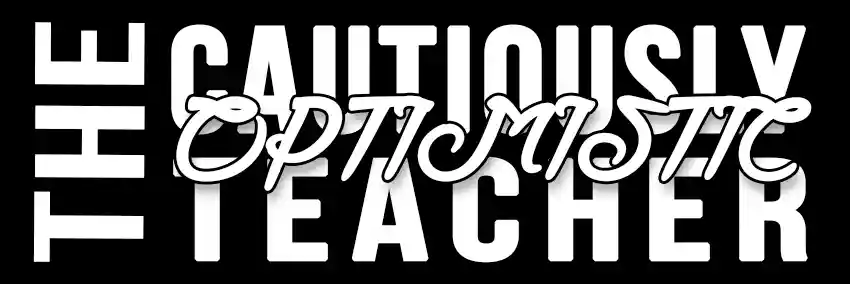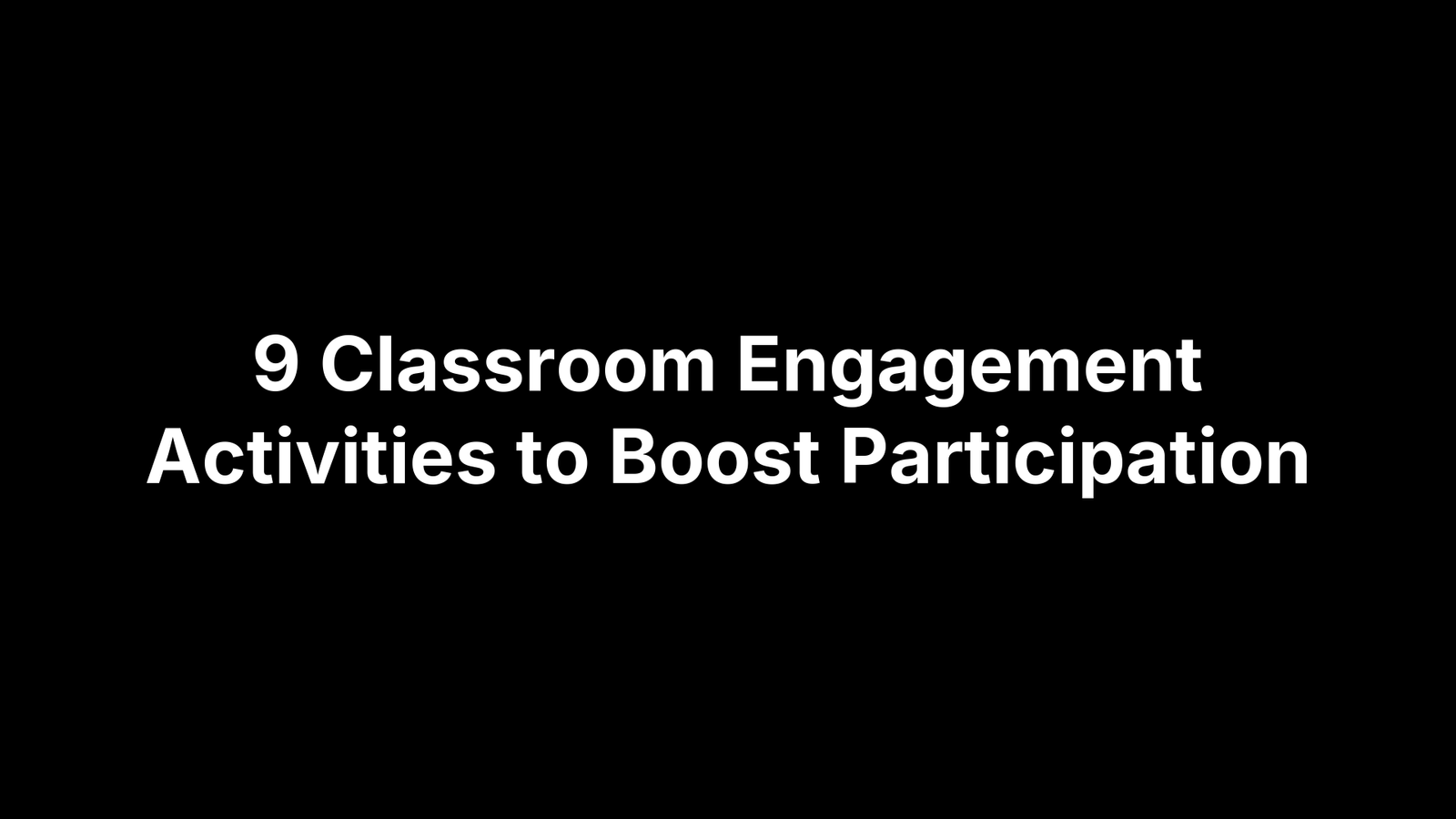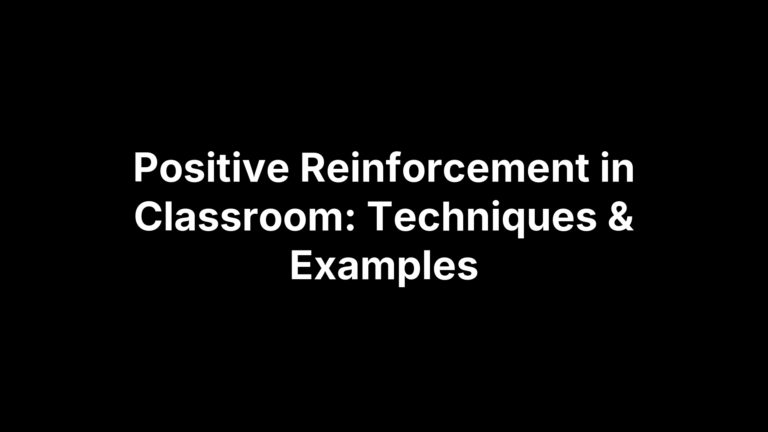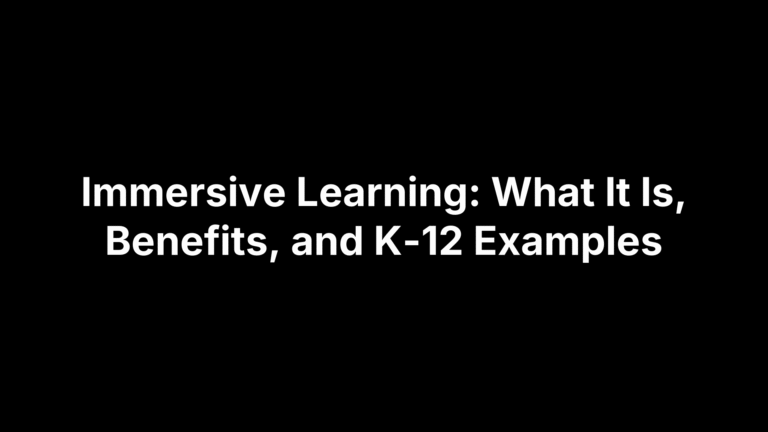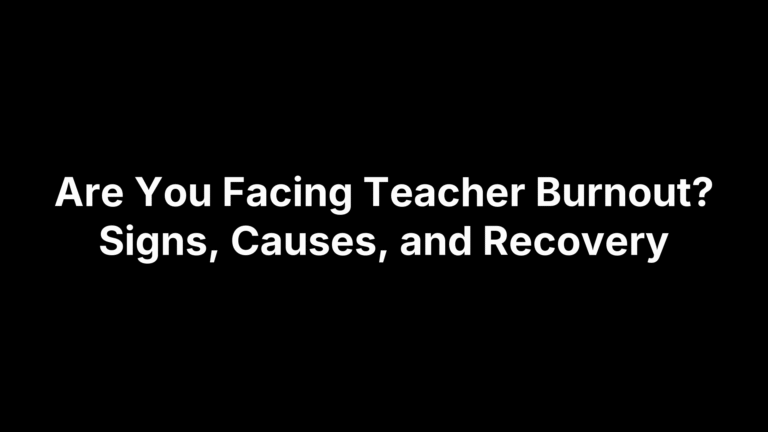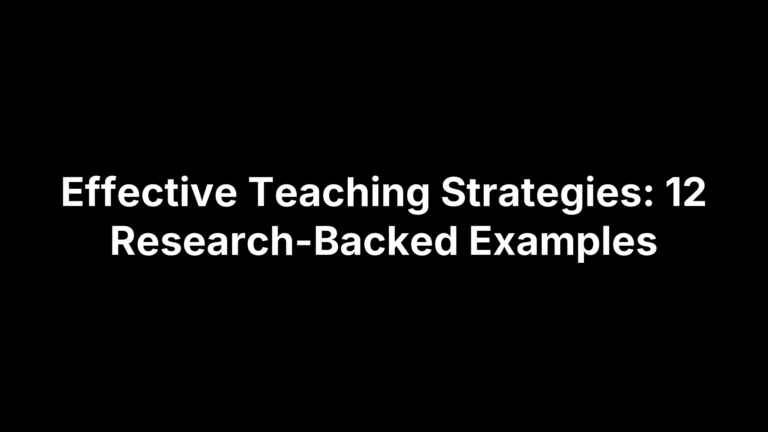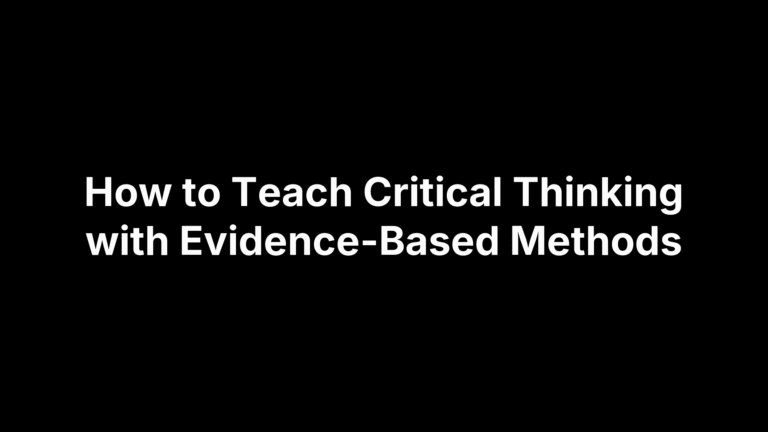9 Classroom Engagement Activities to Boost Participation
You know the feeling: you’ve planned a solid lesson, but ten minutes in the same few hands are up, side conversations start, and attention begins to drift. With varied readiness levels, limited time, and the pressure to cover content, it’s hard to keep every student actively involved without turning class into a circus. Engagement shouldn’t mean more noise or prep—it should mean more purposeful moments where every learner thinks, speaks, moves, and shows what they know.
This guide gives you nine low‑prep, high‑impact classroom engagement activities you can run tomorrow. You’ll get a mix of no‑tech and tech options—quick response signs, live polls and word clouds, KWL charts and exit tickets, Four Corners debates, think‑pair‑share with teach‑back, scavenger hunts, pass‑the‑paper collaboration, and game‑based micro‑competitions—each with clear steps, time and materials, differentiation tips, and a quick assessment idea. We’ll also show how to use The Cautiously Optimistic Teacher AI tools to jumpstart planning in minutes. Use them as warm‑ups, mid‑lesson check‑ins, or closers. Pick one to try this period, then stack two or three for a fully interactive lesson that boosts participation without adding to your workload.
1. Use The Cautiously Optimistic Teacher AI tools to jumpstart engagement
When you only have a few minutes to plan, our AI tools turn “I need something engaging, fast” into ready-to-run classroom engagement activities. Use the Question Generator for open-ended prompts, the Worksheet Maker for quick KWLs or response cards, and the Differentiated Instruction Helper to tier tasks and give students choice—approaches shown to boost engagement through open-ended questioning, low‑risk credit-upon-completion tasks, and UDL-inspired options.
What it is
A set of teacher-first AI tools that produce bite-sized, interactive materials aligned to your lesson goal. Generate discussion stems, bell-ringers, exit tickets, mini-quizzes, printable KWL charts, and tiered versions of the same task so every student can participate with confidence.
- Question Generator: Open-ended questions, quick checks, debate stems.
- Worksheet Maker: One-page KWLs, response cards, scavenger lists, graphic organizers from keywords.
- Differentiated Instruction Helper: Tiered prompts, choice boards, scaffolded directions.
How to run it
Start with your objective, then build a tight engage-check-close flow in minutes.
- Set the target: Type your standard/topic and desired thinking level.
- Generate prompts: Use Question Generator to create 3 bell-ringers and 3 mid-lesson checks.
- Make a quick organizer: With Worksheet Maker, produce a KWL or response card sheet.
- Tier for access: Ask the Differentiated Instruction Helper for two leveled versions and a challenge option.
- Run the routine: Warm-up with a prompt, pause mid-lesson for a quick check, close with an exit ticket.
Time and materials
Plan in 5–8 minutes; run each segment in 3–8 minutes. Materials: device, projector (optional), printed half-sheets or index cards, and a timer.
Differentiation tips
- Offer choice: Provide two prompt options (explain or illustrate) to lower risk and increase buy-in.
- Level the text/task: Generate a “starter,” “on-level,” and “stretch” version of the same question.
- Multiple modalities: Allow respond-by-speaking, writing, or drawing to align with UDL.
Quick assessment idea
Use the tool to create a 1–2 item exit ticket and a “confidence rating” (1–5). Collect for credit-upon-completion, skim patterns, and group students next class based on misconceptions and confidence bands.
2. Quick response signs and hand signals
When you need every student to weigh in at once without calling on volunteers, quick response signs and hand signals deliver. Students respond simultaneously with pre-made cards (Yes/No, A/B/C/D, Agree/Disagree, emotion faces) or with fingers and thumbs. Hand signals are an easy form of “simultaneous individual response,” helping you capture attention and lower the risk of speaking out loud.
What it is
A rapid, whole-class check-in method that turns questions into visible signals. Students hold up cards or fingers to show their thinking, letting you scan for patterns in seconds. Common sets include Yes/No, A/B/C/D for multiple choice, Thumbs Up/Down, and mood or confidence icons to surface how learning feels.
How to run it
Embed 30–60 second signal checks every few minutes to punctuate instruction and keep participation high. Teach the signals first, then use deliberate wait time so everyone can think before responding.
- Prep the set: Make double-sided cards (e.g., Yes/No; A/B/C/D) or agree on hand signals.
- Prompt + pause: Ask a question and wait 3–5 seconds before you say “Show.”
- Scan and probe: Note trends; invite 1–2 students to explain their choice.
- Adjust: Reteach, pair-share, or move on based on what you see.
Time and materials
5–10 minutes to create class sets; thereafter it’s no-prep. Materials: index cards/markers or simply hands. Each check takes under a minute, making this one of the fastest classroom engagement activities to run.
Differentiation tips
Give every learner an accessible way to respond and reduce fear of being “wrong.”
- Provide an “unsure” option: Add a “?” card to normalize uncertainty.
- Use icons and color: Support emerging readers and multilingual learners.
- Layer thinking: After signals, allow a 20–30 second pair-share to explain reasoning.
Quick assessment idea
Track responses on a seating chart with quick tallies (e.g., A/B/C/D marks or “+ / − / ?”). Add a 1–5 confidence signal to the final check, then group students next period by misconception or confidence band for targeted support.
3. Live polls and word clouds
A quick pulse check can turn passive listeners into active contributors. Live polls and word clouds invite every student to answer at once, surface confusion or interest in real time, and help you pivot instruction on the spot—exactly what effective classroom engagement activities should do. They’re low-risk, fast, and perfect for gauging both understanding and tone.
What it is
Live polls are on-the-spot questions—multiple choice, true/false, or rating scales—that students answer simultaneously. Word clouds collect short responses (one word or a brief phrase) and visualize frequency by size, making class thinking visible at a glance and sparking discussion without putting any one student on the spot.
How to run it
Start with a clear objective—check understanding, gather opinions, or capture key takeaways—then mix question types for a fuller picture.
- Plan 3 prompts: a content check (A/B/C/D), a confidence scale (
1–5), and a one-word cloud (“Describe mitosis in one word”). - Set norms: quiet think time, one response per student, respectful interpretation of results.
- Ask + wait: give 5–8 seconds of wait time before students submit.
- Reveal + discuss: note trends, invite two students to justify different choices.
- Adjust: reteach quickly, pair-share, or advance based on the data.
Time and materials
Setup in 3–5 minutes; each poll takes 30–90 seconds, word clouds 2–3 minutes. Materials: projector and any polling tool (or low-tech: sticky notes on the board clustered into a “cloud”).
Differentiation tips
Offer anonymous responses to lower fear; allow emojis/single words for emerging writers; pre-load stems (“I think…, because…”) and visuals to support multilingual learners; give read-alouds or extended time as needed.
Quick assessment idea
Capture a screenshot of the results. Compare a starter and end-of-lesson word cloud for growth, track Δ confidence on the 1–5 scale, and scan distractor choices to group students by misconception for the next lesson.
4. KWL charts and exit tickets
KWL charts and exit tickets pair a quick background‑knowledge probe with a low‑risk close, creating a simple loop that keeps every learner engaged. Use K and W to activate prior knowledge and set purpose; finish with an exit ticket to surface learning, questions, and next‑step needs.
What it is
A KWL is a three‑column organizer—Know, Want to Know, Learned—used at the start, during, and end of a lesson to promote active listening and reflection. Exit tickets are 1–2 short prompts students complete in the last minutes, ideal as ungraded or credit‑upon‑completion checks that lower fear and boost participation.
How to run it
Try this fast routine to make thinking visible and guide your next move.
- Launch K (2 minutes): students jot what they already know.
- Set W (1 minute): each writes one question or goal.
- Mid‑lesson pause: add to L or revise a W question.
- Exit ticket (2 minutes): “One takeaway, one question, confidence
1–5.” - Open next class: address top W items and common L patterns.
Time and materials
2–3 minutes to open, 30–60 seconds mid‑pause, 2–3 minutes to close. Materials: a 3‑column sheet or sticky notes, pens, or a shared doc.
Differentiation tips
Make participation safe and accessible for all learners.
- Provide stems: “I know…,” “I wonder…,” “I learned…”
- Allow modalities: write, sketch, or dictate responses.
- Use icons/word banks: support emerging readers/MLs.
- Tier prompts: recall, connect, or apply (student choice).
Quick assessment idea
Sort L and exit tickets into 2–3 themes, note confidence averages (1–5), and group students by misconception or confidence band. Use the top W questions to open tomorrow with a targeted mini‑lesson.
5. Four corners debate
When attention dips, get students on their feet and deciding. Four Corners combines movement (which lifts energy), visible choice, and quick peer explanation—three ingredients that reliably raise participation. It turns passive agreement into accountable reasoning and gives you an instant read on misconceptions.
What it is
Students move to a labeled corner that matches their stance or answer, then justify their choice. Corners can be A/B/C/D for content questions or Strongly Agree/Agree/Disagree/Strongly Disagree for claims. Example: in math, label corners 1/2, 2/3, 3/4, 4/5 and ask, “Which is greatest?” Groups explain, then you reveal or synthesize the best reasoning.
How to run it
- Set the prompt: Write a multiple‑choice item or provocative claim.
- Label corners: Post clear signs (A–D or agree/disagree scale).
- Think, then move: Give brief wait time; students choose a corner.
- Huddle and justify: 60–90 seconds to craft a group explanation; pick a spokesperson.
- Share and reflect: Hear 2–3 corners, clarify misconceptions, and note shifts if students change corners after hearing arguments.
Time and materials
5–8 minutes per round. Materials: four corner signs, tape, a timer, and open walkways. This is one of the easiest classroom engagement activities to run with zero tech.
Differentiation tips
- Scaffold language: Provide sentence stems (“I chose ___ because…”).
- Offer visual cues: Icons/colors on signs help emerging readers/MLs.
- Access options: Students with mobility needs can hold up corner cards from their seats and join a nearby group for discussion.
- Tier prompts: Start with recall (A–D), build to application (agree/disagree with evidence).
Quick assessment idea
Tally corner counts before and after discussion to see shifts. Collect a one‑sentence justification on a sticky note with a confidence rating (1–5). Sort notes by misconception to target your next mini‑lesson.
6. Think-pair-share with teach-back
When students get quiet time to think, a safe space to test ideas with a partner, and then the chance to explain the concept to peers, participation rises and understanding sticks. This routine blends open‑ended questioning, small‑group discussion, and peer teaching—strategies shown to boost metacognition and confidence while lowering the fear of being wrong.
What it is
Think‑pair‑share gives students individual processing time, then a quick dialogue to refine ideas. The “teach‑back” adds a final step where pairs or small groups explain the solution or concept to the class. Having students model or explain for others deepens comprehension and makes reasoning visible.
How to run it
Keep the cadence brisk and predictable so energy stays high.
- Pose an open‑ended prompt; give quiet think time (
20–45s). - Pair students; each shares and asks one clarifying question.
- Co‑create a concise explanation, example, or diagram.
- Select a few pairs to “teach back” in 30–45 seconds each.
- Close with a quick fact‑check or follow‑up question to solidify the idea.
Time and materials
Total 5–8 minutes. Materials: timer, prompt on board, optional mini whiteboards or half‑sheets for the teach‑back artifact. No tech required.
Differentiation tips
Give every learner a clear on‑ramp before asking them to speak publicly.
- Provide sentence stems and word banks to scaffold language.
- Offer roles (Speaker, Checker, Summarizer) so tasks feel doable.
- Allow draw‑to‑explain or manipulatives for nonlinguistic representation.
- Pre‑pair strategically; keep an “opt‑in” for brief whole‑class speaking.
Quick assessment idea
Have each pair submit a one‑sentence “teach‑back” plus a confidence rating (1–5) on a sticky note or card. Sort by misconception or confidence band and use the patterns to form groups or craft your next warm‑up question.
7. Scavenger hunts and I spy photo challenges
When focus fades, add movement and noticing. Scavenger hunts and I Spy photo challenges get students up, observing closely, and connecting vocabulary to real examples. Movement lifts energy, while quick, low‑risk tasks keep everyone involved—making these some of the most reliable classroom engagement activities for a mid‑lesson boost.
What it is
Two fast, flexible formats that turn content into observable “evidence.” A scavenger hunt gives students a short list of items, terms, or patterns to find around the room or in resources. I Spy frames it as clues (“I spy something that shows density”) so students infer and justify. Use in any subject: text features, geometric shapes, figurative language, lab equipment, primary source clues, or math representations.
How to run it
Keep it tight and evidence‑based so learning stays central.
- Define 6–10 prompts tied to your objective (mix concrete and inferential).
- Set norms: safety, stay in zones, one artifact per prompt, include a reason.
- Timebox the hunt (4–6 minutes). Students snap a photo, sketch, or note location/page.
- Do a quick gallery walk or share‑out; ask for a 10‑second “because” for each find.
- Synthesize: highlight strong evidence, clarify misconceptions, and connect back to the target.
Time and materials
8–12 minutes total. Materials: prompt list on board, timers, sticky notes or mini whiteboards. Optional: student devices for photos (if permitted). No‑tech option: sketches or written descriptions.
Differentiation tips
- Offer multiple clue types: icons, sentence stems, or bilingual word banks.
- Give response options: photo, sketch, or one‑sentence description.
- Assign roles (Spotter, Recorder, Checker) to balance participation.
- Provide an “access zone” or tabletop bins for students with mobility needs.
Quick assessment idea
Require each submission to include a caption: “Claim: ___ because ___.” Collect one best example per team plus a confidence rating (1–5). Sort quickly for accuracy and reasoning to form next‑day groups or craft your warm‑up.
8. Pass-the-paper collaborative writing or problem solving
When the room needs energy and everyone’s voice, pass‑the‑paper is a fast, low‑risk way to get students thinking in the moment. In small circles, learners add one sentence, step, or idea at a time; the cumulative product often ends in laughter—but it also reveals real understanding and misconceptions you can address immediately.
What it is
A rapid round‑robin where students build a response together by literally passing a paper and adding to what came before. It works for content writing and stepwise problem solving, and scales well by breaking the class into groups of 4–5 to keep turns quick and focused.
- Use cases: narrative continuations, claim‑evidence‑reasoning, summary paragraphs, worked math solutions, lab procedure steps, vocabulary-in-context stories.
How to run it
Keep directions tight and the tempo brisk so ideas flow without overthinking.
- Form circles of 4–5; give each group one prompt at the top of a page.
- Quiet think (
20–30s), then Person 1 writes a concise first line/step. - Pass on a timer (
30–45sper turn). Each student adds one new idea only. - After one full rotation, groups reread, underline the best reasoning, and add a final “therefore” or answer line.
- Share one highlight sentence or step with the class.
Time and materials
6–10 minutes total. Materials: one sheet per group, pens, a timer. That’s it—one of the simplest classroom engagement activities to prep and run.
Differentiation tips
Give multiple entry points so all students can contribute meaningfully.
- Provide sentence stems/word banks; allow sketch‑to‑write for ideas.
- Offer roles (Starter, Clarifier, Connector, Concluder).
- Let students dictate to a scribe if writing is a barrier.
- Color‑code turns to see individual contributions at a glance.
Quick assessment idea
Collect each page for credit‑upon‑completion. Have the final writer add a one‑sentence “Because…” justification and a confidence rating (1–5). Skim for patterns (missing steps, weak evidence) to group students or craft tomorrow’s opener.
9. Game-based quizzes and micro-competitions
When you need energy, data, and smiles fast, game-based quizzes deliver. Short, purpose-built “micro-competitions” turn questions into momentum: students think, commit, see instant feedback, and try again. Game-like formats and questions naturally trigger attention, and brief wait time before revealing answers keeps every brain engaged.
What it is
A tight quiz routine run in 1–3 short rounds (3–5 items each). Play solo or in teams, show a live scoreboard or “beat-your-best” growth tracker, and award points for accuracy, reasoning, and improvement—not just speed.
- Round types: multiple choice, true/false, image prompts, one-word “type-ins.”
- Scoring ideas: +2 correct, +1 valid justification, +1 personal best streak.
How to run it
Keep rounds brisk and predictable so pacing stays high.
- Curate 8–12 items aligned to today’s objective; group into two rounds.
- Teach norms: think time (
3–5s), then submit; celebrate reasoning and growth. - Run Round 1: reveal items one by one; show correct answer with a 10–15s micro-explanation.
- Quick huddle: 60s team talk—“Which distractor fooled us and why?”
- Run Round 2: same cadence; add one “justify your choice” item for +1 reasoning.
- Close: highlight a common misconception and one top justification.
Time and materials
5–10 minutes prep; 8–12 minutes to run. Materials: projector and any quiz format (devices optional). No-tech option: students hold up A/B/C/D cards; you tally on the board.
Differentiation tips
- Normalize risk: allow anonymous responses or team play.
- Multiple modalities: read items aloud; add visuals/icons for key terms.
- Access supports: stems (“I chose ___ because…”), bilingual word banks, extended time on one “deep” item.
- Roles: Captain (submit), Checker (evidence), Encourager (morale) to balance participation.
- Celebrate growth: track
Δ scoreto reward improvement over rank.
Quick assessment idea
Embed a confidence check after each item (1–5). Save results or tally by hand to spot distractor patterns and low-confidence standards. End with a one-line exit ticket: “One error I won’t make again: ___ because ___.” Use these to group students and plan the next mini-lesson.
Conclusion section
Pick one routine and run it this week. Whether it’s quick response signs for instant checks, a word cloud to surface class thinking, a fast KWL + exit ticket loop, Four Corners to get students moving, or a micro‑quiz for energy and data—small, consistent moves build a culture where every learner participates. Layer predictable elements across activities—clear wait time, simultaneous responses, visible thinking, brief movement, choice, and low‑risk credit‑upon‑completion—and you’ll see attention, confidence, and understanding rise together.
Next, stack two or three routines into a tight lesson arc: a 60‑second signal check, a think‑pair‑share teach‑back, and a two‑item exit ticket. If prep time is tight, let our tools handle the heavy lifting—generate prompts, organizers, tiered tasks, and quick assessments in minutes. For ready‑to‑use templates and our free AI planning helpers, visit The Cautiously Optimistic Teacher and make engagement the easiest part of your day.
